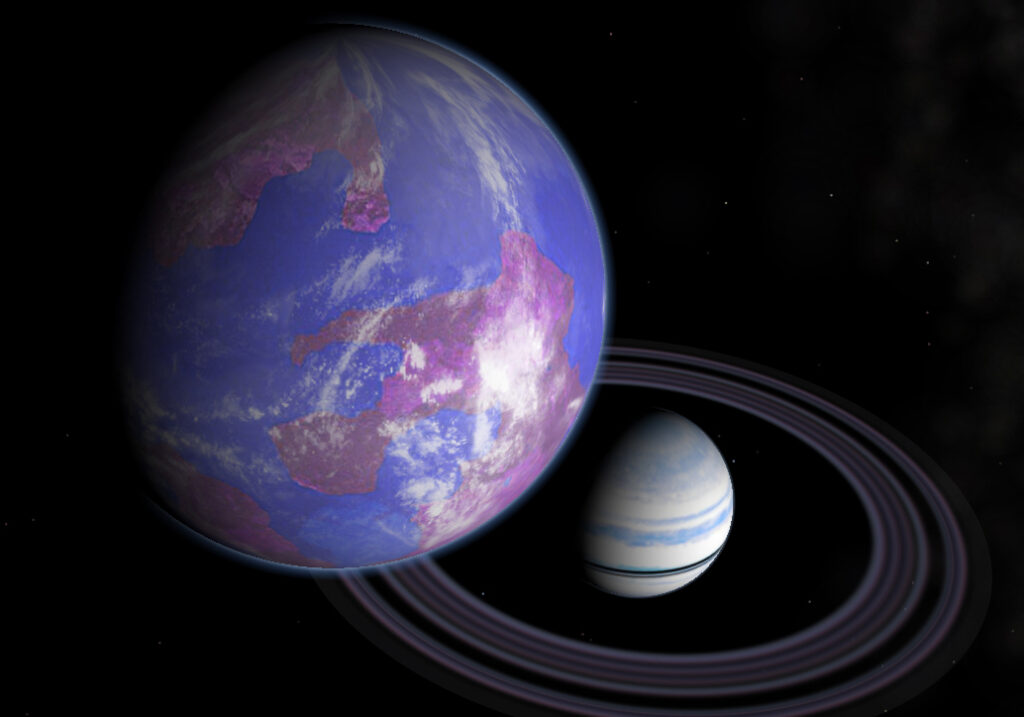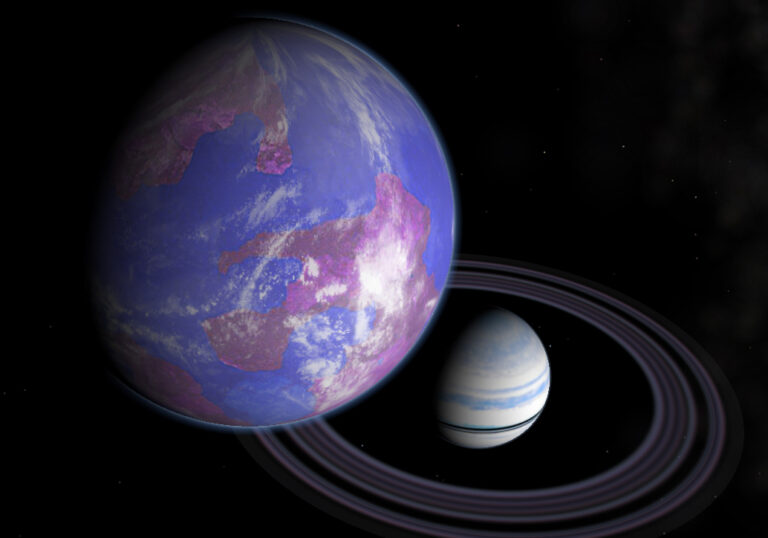Planets with Wobbles May Unveil Moons Similar to Earth’s
The detection of moons outside our Solar System that could potentially support life has been made easier, thanks to the research conducted by an astronomer from University College London (UCL). David Kipping, whose work is funded by the UK’s Science and Technology Facilities Council (STFC), has discovered that these moons can be identified by observing fluctuations in the velocity of the planets they orbit. In his recent publication in the Monthly Notices of the Royal Astronomical Society on the 11th of December, Kipping’s calculations not only enable us to confirm the presence of a moon around a planet, but also determine its mass and distance from its host planet. These factors play a crucial role in assessing the likelihood of a moon’s habitability.
Currently, there are over 300 exoplanets (planets outside our Solar System) known to us, with nearly 30 of them located within the habitable zone of their host star. However, all of these planets are uninhabitable gas giants. The search for moons orbiting these planets is significant in our quest for extraterrestrial life, as they are also situated within the habitable zone and are more likely to possess rocky surfaces resembling Earth, with the potential to sustain life.

David Kipping explained that until now, astronomers have primarily focused on observing the changes in a planet’s position as it orbits its star. However, this approach has its limitations as these changes can be influenced by other factors, such as the presence of a smaller planet. To overcome this challenge, a new method has been adopted which involves analyzing the variations in a planet’s position and velocity each time it passes in front of its star. This new approach provides more reliable information and enables the detection of moons, including an Earth-mass moon orbiting a Neptune-mass gas planet.
According to Professor Keith Mason, Chief Executive of the Science and Technology Facilities Council, this development is highly exciting as it allows astronomers to gather extensive information about distant moons and planets. The discovery of gas giants with moons outside our Solar System, similar to Jupiter and Saturn, raises the possibility of finding Earth-like moons as well.
This article is republished from PhysORG under a Creative Commons license. Read the original article.
Do not forget to share your opinion with us to provide you with the best posts !




0 Comments